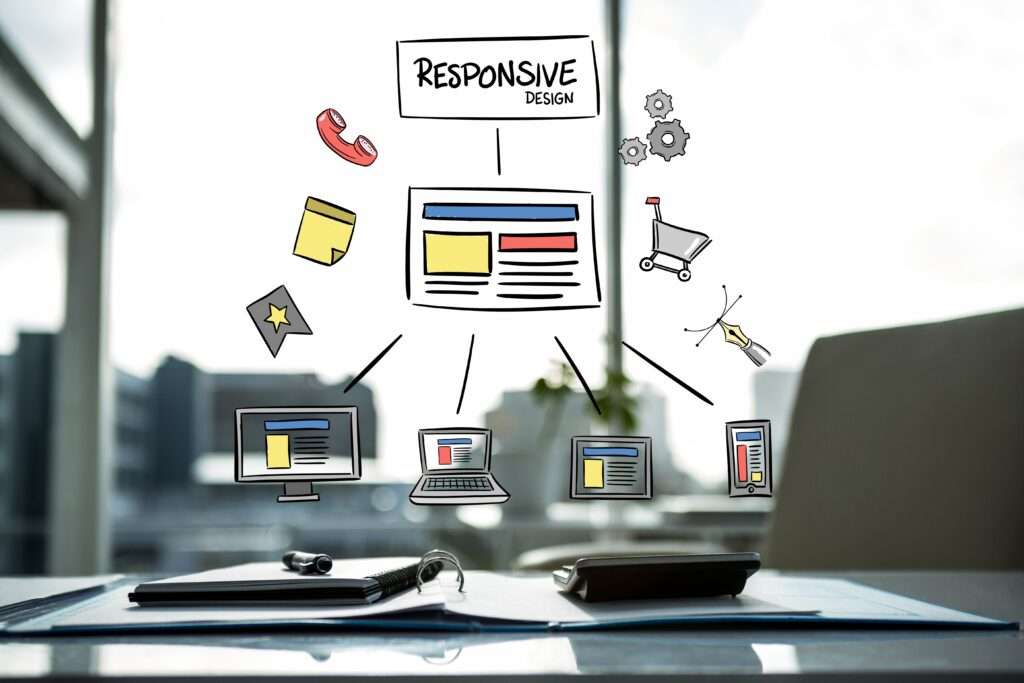Crafting User-Centric Experiences: Key Elements of UX and UI Design
In the ever-evolving landscape of digital interactions, User Experience (UX) and User Interface (UI) design have emerged as vital components that can make or break the success of any digital product. Whether it’s a website, a mobile app, or a software platform, the seamless integration of Elements of UX and UI Design is essential to create meaningful and engaging user experiences. In this comprehensive blog, we’ll delve into the key elements that form the backbone of UX and UI design, unravelling their significance and impact on modern digital products.
You can also learn how professionals work and offer service to clients with Elements of UX and UI Design.
Elements of UX and UI Design That Works Like Magic

Clear and Intuitive Navigation
Navigation is the backbone of user interaction. Users should be able to effortlessly explore and navigate through your digital product. Intuitive navigation includes logical menu structures, easily recognisable icons, and a well-organized content hierarchy. By providing clear paths, users can swiftly find what they’re looking for, enhancing their satisfaction and reducing frustration.
Responsive Design
In today’s multi-device world, a responsive design is non-negotiable. Users access digital products across various devices, from desktops to smartphones and tablets. A responsive design ensures that your product adapts seamlessly to different screen sizes, preserving the user experience regardless of their device.

Consistency and Branding & Visual Hierarchy
Consistency is critical to establishing a memorable brand identity. UI elements like colour schemes, typography, and visual styles should align with your brand’s personality. Consistency instils trust, making users feel comfortable and familiar with your product, ultimately encouraging more extended engagement.
For example, professionals offer services based on using the best features of UX and UI Design.
Guiding users’ attention is a core principle of effective design. Visual hierarchy involves using size, colour, contrast, and placement to direct users’ focus toward essential elements. By creating a clear hierarchy, designers ensure that users perceive the content in the order of its significance. These Elements of UX and UI Design are mostly used.
Performance Optimization & Continuous Iteration
No matter how well-designed your product is, slow performance can undermine the user experience. Speedy loading times and seamless interactions contribute to a positive perception of your product. Optimizing images, reducing unnecessary animations, and leveraging caching mechanisms are all part of this effort.
The digital landscape is dynamic, and user preferences evolve over time. Regularly analyzing user behaviour, collecting feedback, and iterating on your design based on real-world usage is integral to maintaining a user-centric approach.

Minimalism and Simplicity
The age-old adage “less is more” in UX and UI design holds true. A clean and uncluttered interface reduces cognitive load, allowing users to interact with your product without distraction. Minimalism also contributes to a sleek, modern aesthetic that resonates with contemporary design trends.
Content is the heart of any digital product. UX and UI design should prioritize user-centred content, focusing on delivering value to the users. The placement of content, the readability of text, and the presentation of visuals should all enhance the user’s understanding and engagement.

Accessibility,Feedback and Interaction
Designing for everyone is a fundamental principle of UX and UI design. Ensuring that your product is accessible to users with disabilities is ethical and essential for reaching a broader audience. Elements like alt text for images and keyboard navigation options are critical for creating an inclusive experience.
Interactive elements should provide immediate and meaningful feedback. Visual cues, animations, and micro-interactions give users a sense of control and help them understand the outcomes of their actions. This fosters engagement and empowers users to explore your product more confidently.

Boost Business from Best Designs
Creating a compelling and user-friendly digital experience involves many factors that work together seamlessly. Here, concisely, are essential Elements of UX and UI Design that contribute to a successful user experience:
User-Centered Approach
Centre design decisions around user needs, behaviours, and preferences to ensure the product meets user expectations.
Simplicity
Strive for clarity and minimalism. Simplified interfaces are easier to navigate, reducing cognitive load and enhancing user understanding.
Consistency
Maintain uniformity in design elements (colours, fonts, buttons) throughout the product to provide familiarity and reduce confusion.
Navigation
Create intuitive navigation pathways that help users find information effortlessly, ensuring they always feel safe within the interface.
Visual Hierarchy
Arrange content elements in a structured manner, utilizing size, colour, and positioning to guide users’ attention to important information.
Feedback and Response
Provide immediate and clear feedback for user actions, ensuring they are aware of the system’s response to their interactions.
Accessibility
Design with inclusivity in mind, making the product usable for people with disabilities by adhering to accessibility standards.
Loading Speed
Optimise images, code, and assets to ensure quick loading times, preventing user frustration due to slow performance.
Mobile Responsiveness
Ensure the design adapts seamlessly to various screen sizes and devices, offering consistent functionality and aesthetics.
Whitespace
Employ sufficient whitespace to enhance readability and reduce visual clutter, giving users breathing space to focus on content.
Call to Action (CTA)
Create prominent and clear CTAs that guide users toward desired actions, utilizing compelling language and placement.
Content Legibility
Choose appropriate fonts, sizes, and line spacing to enhance content readability across different devices.
Error Handling
Develop user-friendly error messages with clear explanations and suggestions for resolution, preventing frustration during user errors.
User Feedback Integration
Incorporate mechanisms for users to provide feedback, indicating a commitment to continuous improvement.
Prototyping and Testing
Utilize prototypes to test and refine design concepts, uncovering usability issues early in development.
Aesthetics
Craft a visually appealing design that resonates with the brand while maintaining a balance between aesthetics and functionality.
Progressive Disclosure
Reveal complex information progressively, preventing overwhelming users with excessive details upfront.
Gestures and Interactions
Design natural and intuitive gestures and interactions for touch-enabled devices, enhancing user engagement.
Emotional Design
Elicit emotional connections by incorporating elements that resonate with users’ feelings and aspirations.
User Journey Mapping
Understand users’ paths through the interface, identify pain points, and optimize the experience accordingly.
Flexibility
Design interfaces that accommodate user preferences, offering customizable settings when appropriate.
Security and Privacy
Assure users of the product’s security measures and respect for their privacy, building trust in the experience.
These UX/UI design features empower a product to captivate users, foster satisfaction, and encourage repeat usage, ultimately leading to a successful and user-centred digital experience.
Summary
In conclusion, UX and UI design are far more than just aesthetics; they encompass a holistic approach to crafting exceptional digital experiences. By integrating these key elements into your design process, you can create products that meet users’ needs and delight and engage them on a deeper level. In a world where user expectations are constantly rising, embracing these principles is the gateway to success in the digital realm.
So, make the best use of the Elements of UX and UI Design.
